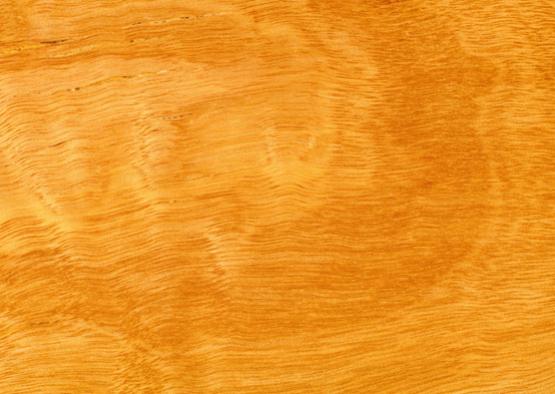Candlebark is a medium-sized hardwood found in parts of the cooler, south-eastern states of Australia. It is not widely available and is used predominately for building framework.
Ribbon Gum, White Gum
Eucalyptus rubida

Candlebark is a medium-sized hardwood that grows in the cooler, south-eastern states of Australia. Predominately found in Victoria in the Great Dividing Range, Candlebark also grows in parts of Tasmania, southern New South Wales and South Australia.
Its heartwood is pale pink, while the sapwood is usually indistinguishable. Candlebark has a medium texture and straight grain. Gum veins are often present.
Candlebark is mainly used for building framework but only has limited availability, mainly in Victoria.
Shrinkage
| Very Low | Low | Medium | High | Very High | |
|---|---|---|---|---|---|

|

|
||||
Tangential : |
12.20%
|
||||
Radial : |
5.50%
|
||||
Unit Movement Tangential: |
0.34%
|
||||
Unit Movement Radial: |
0.22%
|
Strength Group

Very High |
High |
Reasonably High |
Medium High |
Medium |
Reasonably Low |
Low |
Very Low |
||
Unseasoned: |
S1 |
S2 |
S3 |
S4 |
S5 |
S6 |
S7 |
S8 |
|
|---|---|---|---|---|---|---|---|---|---|
 |
|||||||||
Seasoned: |
SD1 |
SD2 |
SD3 |
SD4 |
SD5 |
SD6 |
SD7 |
SD8 |
|
 |
Stress Grade

| Structural No. 1 |
Structural No. 2 |
Structural No. 3 |
Structural No. 4 |
Structural No. 5 |
|
Unseasoned: |
F11 |
F8 |
F7 |
F5 |
F4 |
Seasoned: |
F17 |
F14 |
F11 |
F8 |
F7 |
Density per Standard

Seasoned: |
735kg/m3
|
|---|---|
Unseasoned: |
1100kg/m3
|
Joint Group

Very High |
High |
Reasonably High |
Medium |
Low |
Very Low |
|
Unseasoned: |
J1 |
J2 |
J3 |
J4 |
J5 |
J6 |
|---|---|---|---|---|---|---|
 |
||||||
Seasoned: |
JD1 |
JD2 |
JD3 |
JD4 |
JD5 |
JD6 |
 |
Colour

| White, yellow, pale straw to light brown | Pink to pink brown | Light to dark red | Brown, chocolate, mottled or streaky | |
 |
||||
Mechanical Properties
Modulus of Rupture - Unseasoned: |
61
|
|---|---|
Modulus of Rupture - Seasoned: |
95
|
Modulus of Elasticity - Unseasoned: |
10
|
Modulus of Elasticity - Seasoned: |
13
|
Maximum Crushing Strength - Unseasoned:  |
30
|
Maximum Crushing Strength - Seasoned: |
55
|
Impact - Unseasoned: |
13
|
Impact - Seasoned: |
11
|
Toughness - Unseasoned: |
Medium - 15 - 24 Nm
|
Toughness - Seasoned: |
Low - up to 15 Nm
|
Hardness - Unseasoned: |
5.1
|
Hardness - Seasoned: |
6.3
|
Durability
| Low | Moderate | Reasonably High | High | |
| (0 - 5 yrs) | (5 - 15 yrs) | (15 - 25 yrs) | (more than 25 yrs) | |
In-Ground: |
 |
|||
| (0 - 7 yrs) | (7 - 15 yrs) | (15 - 40 yrs) | (More than 40 yrs) | |
Above ground: |
 |
|||
| (0 - 20 yrs, usually < 5) | (21 - 40 yrs) | (41 - 64 yrs) | (More than 60 yrs) | |
Marine Borer Resistance: |
 |
Lyctid Borer Susceptibility: |
Susceptible |
|---|---|
Lyctid Borer Susceptibility - Other: |
|
Termite Resistance: |
Not Resistant
|
Fire Properties
| 1 - non-combustible | 2 - reasonably non-combustible | 3 - slightly combustible | 4 - combustible | |
Fire Properties Group |
Group Number - Other: |
3 if used on MDF or particleboard ≥12mm; veneer thickness
|
|---|---|
Average Specific Extinction Area: |
<250
|
Bushfire Resistance: |
BAL 12.5 and 19 – Door and window joinery only
|
Candlebark has a heartwood that is pale pink, while its sapwood is usually indistinguishable and up to 30mm wide. Candlebark has a medium texture and straight grain. Gum veins are often present.
Candlebark is used predominately for building framework.
Care needs to be taken when drying candlebark as considerable collapse can occur.

